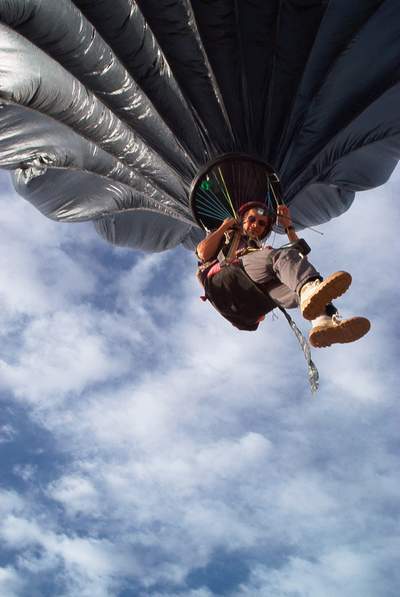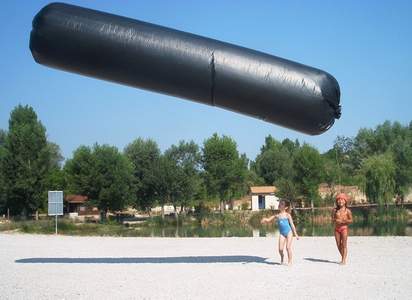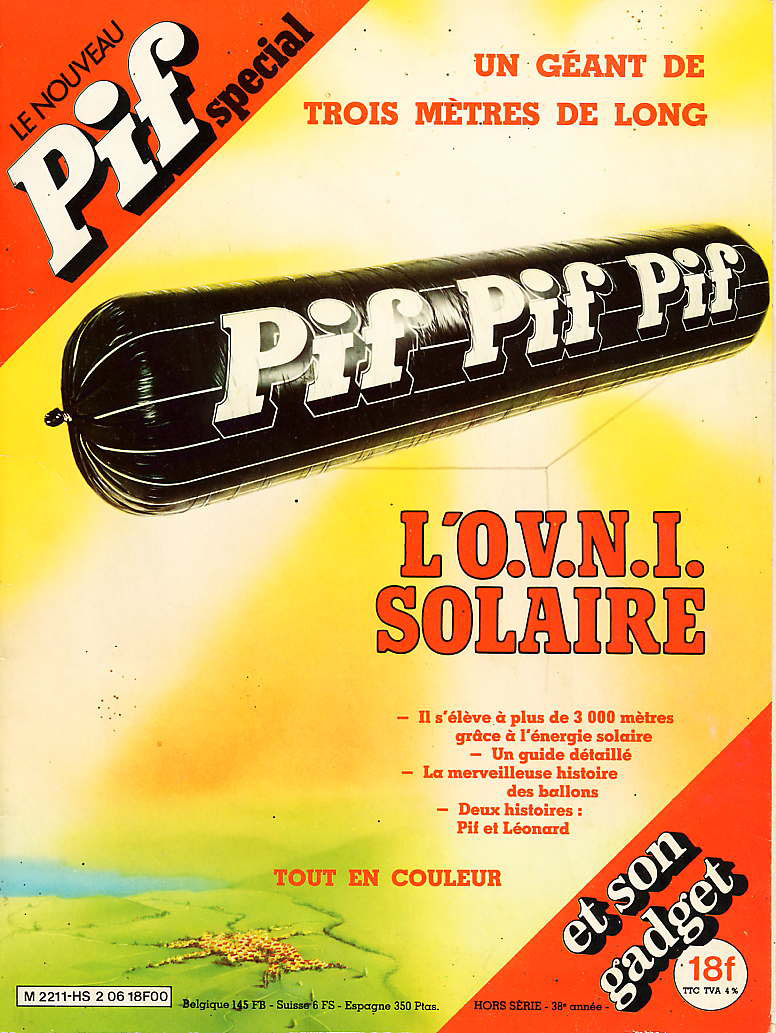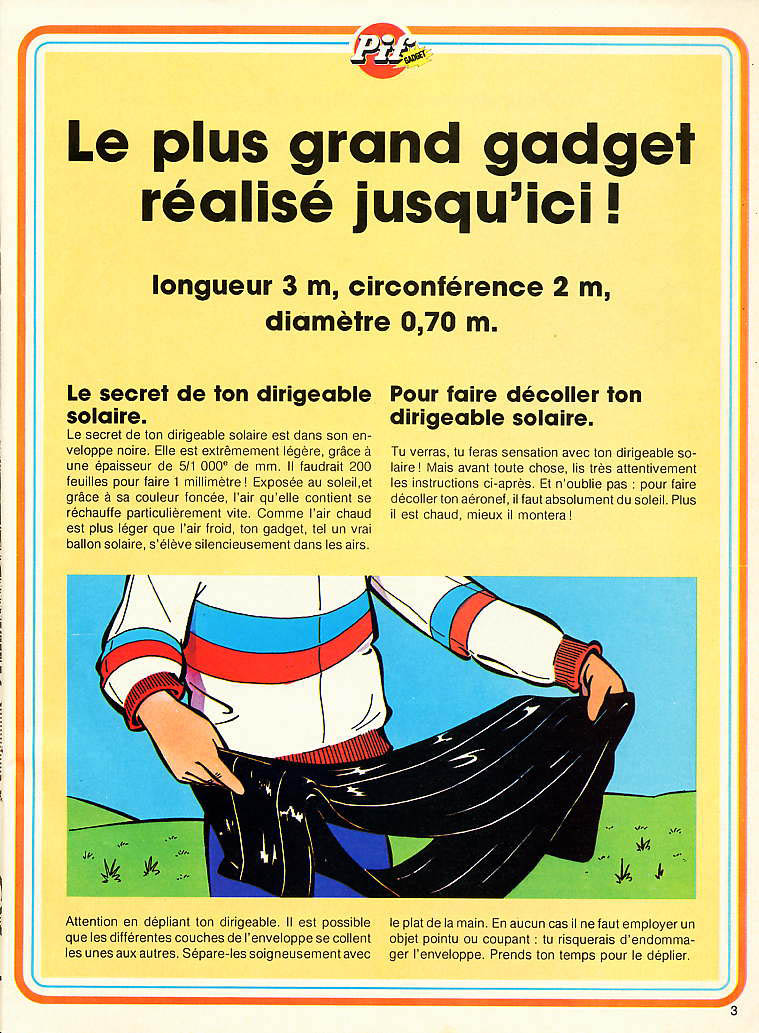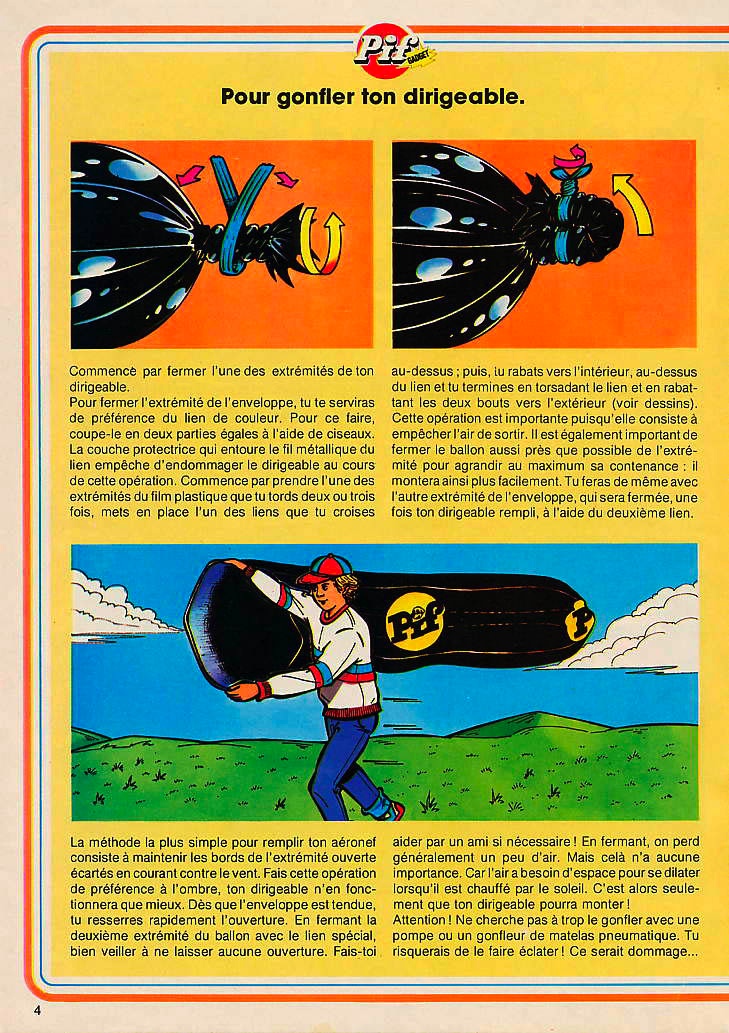solar balloon tests in Tbilisi Georgia
Jeffrey Warren
Jeffrey Warren
Mathew Lippincott
Cool to see you trying it out! I'm headed out tomorrow to run head to head tests on iron oxide black vs. Charcoal. The iron oxide balloon rig will already put up a camera, and after the lift tests I'll mail the rigs to you. It should fly fine with a 5kph wind.
Iron oxide black can be purchased as a guache or tempera pigment at artist's supply stores, or for much cheaper/free from pigment supply houses and industries that use it. My supply comes from a friendly concrete factory.
With the clear plastic balloons particulate size really matters. My first charcoal balloon looked much like yours, as I hand ground a charred log and threw it in the balloon. Not too dark, not much lift.
Grinding alone can work, but inever get the balloons uniformly dark. We're depending on static cling to coat the inside, so the ideal system would grind particles super fine and "tribo charge" them, like in a laser printer. ((somewhere i've got some contacts at cabot pigments in massachusetts on the subject of tribo charging, I'll try to pass them along))
My diy solution right now is to grind pigment and then pour it in to the intake of an inflatable mattress pump, blowing pigment in to a mostly inflated balloon. The pump pulverizes (definitely) and slightly charges the particles(I think). I find that coating to be surprisingly durable, even in transit.
I'll have a more formal write-up together soon, but keep up the experiments, your work in Georgia is awesome!
On Jul 24, 2010 2:34 AM, "Jeffrey Warren" <war...@mit.edu> wrote:
sorry, misspell - Mathew Lippincott - see a post about the Portland OR workshop he gave recently here: http://www.headfullofair.com/
On Sat, Jul 24, 2010 at 1:33 PM, Jeffrey Warren <war...@mit.edu> wrote:
>
> I just posted about ye...
Mathew Lippincott
I forgot to mention carbon black or "lamp black" as a pigment. I haven't run tests on it because my samples haven't arrived yet (8 weeks and waiting...), but I bet it would work great.
>
> On Jul 24, 2010 2:34 AM, "Jeffrey Warren" <war...@mit.edu> wrote:
>
> sorry, misspell - Mathew ...
Jean-Baptiste LABRUNE
MIT Media Lab
20 Ames St E14-464C
Cambridge, MA 02139, USA
Jamie Lent
used 16 black plastic garbage bags (.85mil) taped together. It lifts
off the ground, but it really does not have that much lift.
I have been looking for a better material.
Painters drop cloth is plenty thin, often .3 mil or less, but it only
comes in clear. Black plastic mulch solves that, but I have only found
that 1 mil and thicker. Otherwise it is great. 3'x50' rolls.
With the carbon dust coating, the painters drop cloths could work
fantastically, requiring only minimal taping, but it seems like
coating would get to be a lot of work.
Any suggestions?
http://www.youtube.com/watch?v=yrKGoIUMnz4
On Jul 24, 11:27 am, Jean-Baptiste LABRUNE <labr...@media.mit.edu>
wrote:
> Hey Jeff,
>
> look herehttp://pagesperso-orange.fr/ballonsolaire/all their ballons
>
> and alsohttp://www.kaymont.com/
>
>
> http://www.kaymont.com/
>
> On Jul 24, 2010, at 5:33 AM, Jeffrey Warren wrote:
>
>
>
>
>
> > I just posted about yesterday's solar balloon flight test in Georgia
> > - but wanted to ping the list for suggestions on why we didn't
> > manage to get it to fly!
>
> > My guesses are: the plastic wasn't dark enough, or the wind - 5kph -
> > was too much. We used a cup of ground charcoal to darken the inside
> > of the balloon, as recommended by Matthew Lippincott, but as we had
> > to hand-grind the charcoal (super DIY!) maybe it just wasn't as fine
> > and didn't darken the balloon enough? We're considering trying again
> > with black plastic.
>
> > Suggestions?
>
> > Jeff
>
Jeffrey Warren
Wow that looks great! Is the lift just a matter of size? If you used the black mulch stuff you could make a gigantic one... also if we look around online maybe we could order some super thin black plastic; I had to do that to find 100 gallon trash bags, for example.
Lentamental
In space, no one can hear your shutter click.
Lentamental
Lentamental
Mathew Lippincott
Yeah, that's what's been arrived at in the Yahoo Solar Balloons group. It's a somewhat dormant discussion, but people still respond to questions. Also check out Robert Rochte's team at Grosse Point Academy. He uses long cylindrical balloons made of polyester and loaded with black tempura (iron oxide), which is somewhat like Christophe Praturlon's balloons (the sausage shaped black ones in the photos you embedded) made of different materials.
The problem with black plastic is that the pigment loading is 30-50%, and it isn't nearly as strong as the clear plastic. Although temperature equilibrium is similar for balloons of either material, the clear doesn't get as hot as the black, because the plastic itself isn't absorbing the heat.
My friend Max, who is visiting Boston from Portland, OR, is going to drop two 12' tetrahedron balloons made with .315 mil HDPE and iron oxide black off with Jeffrey tomorrow. One is heat seamed, the other taped, both made at a workshop I ran here in Portland.
Rochte:
http://arhab.blogspot.com/
Praturlon:
http://ballonsolaires.over-blog.com/
Also if you want to dig deep into the high altitude stuff:
http://arhab.org/members/members.html
Mathew
work: cloacina.org/blog
play: headfullofair.com
Mathew Lippincott
a few comments on things he suggests that I've tested out-
contrary to what he said, you can can get good heat-seaming results with just a soldering iron. use parchment paper to protect the plastic, and hold the soldering iron's tip up to a metal straight edge. The plastic will melt up to the metal edge and form a nice seam.
http://www.vimeo.com/13440961
I've used the type of seamer Rochte suggests ($250!) at PIFAS, and constantly aligning the seams and checking them is a pain, I can't recommend it. It creates a slightly stronger seam but I've never had soldering iron seams fail on me.
The recovery system he mentions, tying strings to the three corners of the balloon and inverting the envelope- Three strings will tangle, especially if your balloon is flown on a line. Use one string attached to the center of the top of the balloon.
using a hoop for the skirt is total overkill. re-enforce a separate attachment corner from the inflation corner, and tie off the inflation corner.
Lentamental
Jeffrey Warren
Mathew Lippincott
Yes, the 12' balloons have both flown with a SD1000 in a soda bottle rig. some photos here:
http://www.headfullofair.com/2010/08/05/grassroots-mapping-pdx-flight-images/
150' is based on my interpretation of FAA Part 101. You could go to 500', but you have to get permission first:
http://www.chem.hawaii.edu/uham/part101.html
101.15 Notice requirements.
No person may operate an unshielded moored balloon or kite more than
150 feet above the surface of the earth unless, at least 24 hours
before beginning the operation, he gives the following information to
the FAA ATC facility that is nearest to the place of intended
operation:
(a) The names and addresses of the owners and operators.
(b) The size of the balloon or the size and weight of the kite.
(c) The location of the operation.
(d) The height above the surface of the earth at which the balloon
or kite is to be operated.
(e) The date, time, and duration of the operation.
More resources on the law:
distinguishing between tethered and moored balloon laws:
http://www.balloonlife.com/publications/balloon_life/9608/tethmoor.htm
FAA Part 101 and interpretations from a high altitude ballooning perspective:
http://www.parallax.com/tabid/567/Default.aspx
(see chapter 14)
@LENTAMENTAL:
whether to leave the bottom open depends on how and how high you're flying the balloon. We're discussing line-flying the balloons, not free flight, and in windy conditions the balloon will partially deflate itself tugging against the line if the bottom is left open.
The iron I'm using can be purchased here for $13:
http://www.harborfreight.com/plastic-welding-kit-80-watt-iron-67102.html
A better, more versatile plastic welder is available here (they also sell the tip alone as a separate item for $20):
http://www.urethanesupply.com/storeatv.php
For all you hackers, I'd love to see one of these irons modified with a PID controlled SSR.
Lentamental
Mathew Lippincott
Sweet balloon man! Yeah, art stores are not the place to go for pigments, it will kill your budget. Contacting industrial pigment suppliers is the way to go. I'm traveling and can't recall the supplier I got iron oxide black from, but will pass that on. I think also carbon black would work, but cabot pigments never sent me a sample they promised. I'd like to give them another shot though.
On Sep 14, 2010 12:21 PM, "Lentamental" <lentame...@gmail.com> wrote:
At last, all of our parts have arrived. We taped the balloon together, and are just waiting on some good sunny weather. My biggest question is how to powder the inside of the balloon. I was planning on just tossing some powder in as we inflate the balloon with a fan. Then once it is full, shake the balloon a bit to get the powder spread around.
Approximately how much powder did you use? Also have you found any particularly good cheap powders? We ended up buying some overly expensive oil based paint powder, and I don't want to pay that much ever again.
On Sat, Aug 14, 2010 at 12:02 PM, Mathew Lippincott <mathew.l...@gmail.com> wrote:
>
> @Jeff...
Lentamental
Mathew Lippincott
The pigment looks spotty but your construction is excellent, great job!
Tell me more about the pigment- can you send the packaging description? Is it actually oily or meant for suspension in an oil medium? Is it lamp black (often made from the soot of an oil fire)?
Crushing the pigment with a mortar and pestle may help, but if it is very fine already that may not help. I dump pigment through an inflatable mattress blower, which is a little rough on the blower but scatters the pigment very well.
How much pigment do you have? I like overloading the balloon and collecting the excess.
On Sep 19, 2010 9:17 PM, "Lentamental" <lentame...@gmail.com> wrote:
Well we had a partial success. We got the balloon to fly, and boy did it fly. It took right off, and kept going and going. Then we pulled it back in and attached my Canon A560 with the KAP rig. It managed to fly about 20' up, but it was really struggling.The biggest issue we had was getting the pigment to stick. We are using oil based paint powder, and it didn't stick to anything but our hands. We were theorizing about rubbing the balloon on carpet to statically charge it, or while the balloon was deflated, to rub the powder into the plastic, because it did not tint very much at all.Any suggestions for getting the powder to stick?I must say, I was suprised how well it worked, despite still being pretty translucent.
On Tue, Sep 14, 2010 at 4:01 PM, Mathew Lippincott <mathew.l...@gmail.com> wrote:
>
> Sweet ...
Lentamental
Mathew Lippincott
thanks for the pigment link- we'll have to add bone black to the list of pigments that don't work well. I'm sorry it didn't work for you bit take heart in increasing the knowledge base.
On the same page is mars black, which is iron oxide. I know that will work, but it will be cheaper to get it from an industrial supplier.
As I said before, I'm traveling now but I'll get the name of an industrial supplier when I get home. They probably won't sell us a pound though- I got my samples out of 500lb bags owing to a factory contact. But maybe they'll give us samples. If I can get some more I can mail you a bit. (Don't post your address directly to the list).
On Sep 20, 2010 4:54 PM, "Lentamental" <lentame...@gmail.com> wrote:
The pigment we used was a powder, meant to have oil added to it (which obviously we did not do). It is the second one from the top here: http://www.gamblincolors.com/artists.grade.oils/blacks/index.htmlIt was already very very finely powdered, but it seemed to clump a bit. We basically just poured in a bunch, in a big pile right inside the neck of the balloon, and then blew the 4" box fan across it as it inflated. Perhaps actually dropping the paint through the fan would have helped, but its a really nice brushless nearly silent fan that I don't want to destroy. Once the balloon was mostly inflated, we shook it about, rolled it over and over and over, and even tried rubbing the pigment between two pieces of the plastic, but nothing really worked. We poured 4oz of the pigment in, and by the end, still had at least 3/4 of that in a big pile at the bottom. We bought a full pound of the pigment, thinking it would hold on to a lot more, so we were not skimping on it. The plastic remained fairly translucent, but it was better than nothing.The only place the pigment really stuck was right at the neck, where the plastic was all crinkled.We must have made quite a spectacle of ourselves, because the next day everyone was asking me what I was doing with that big plastic balloon thing.
On Mon, Sep 20, 2010 at 3:58 PM, Mathew Lippincott <mathew.l...@gmail.com> wrote:
>
> The p...



